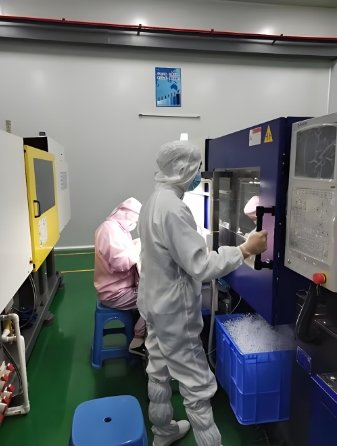
Disposable medical products are essential in healthcare. They prevent infections and ensure patient safety. Medical injection molding is the best way to produce them. It creates high-precision parts quickly and cost-effectively. Mold makers design and manufacture the molds used in this process.
Why Use Medical Injection Molding?
1. High Efficiency
Injection molding produces thousands of parts in a short time. It speeds up production and reduces costs.
2. Precision and Consistency
Medical products need exact shapes and sizes. Medical injection molding ensures each part meets strict quality standards.
3. Sterile and Safe Materials
Medical products must be safe for patients. Mold makers select biocompatible plastics that meet healthcare regulations.
4. Cost-Effective Production
Once the mold is ready, mass production is affordable. This makes disposable products widely available.
Common Disposable Medical Products Made with Injection Molding
1. Syringes and Needles
Syringes are used for injections and fluid withdrawal. They must be precise and leak-proof. Injection molding ensures uniform quality.
2. IV Components
IV connectors, tubes, and drip chambers are injection molded. These parts must be durable and sterile.
3. Catheters
Catheters are used for drainage and fluid delivery. They require smooth surfaces and flexible materials.
4. Respiratory Masks
Masks protect patients and healthcare workers. Injection molding allows for comfortable and effective designs.
5. Diagnostic Test Kits
Many test kits have molded plastic components. This includes casings for rapid tests and sample collectors.
6. Surgical Gowns and Drapes
Some protective coverings have molded plastic components. These ensure a secure and hygienic fit.
7. Pill Blisters and Packaging
Injection molding creates precise packaging for medications. This keeps drugs safe and contamination-free.
8. Blood Collection Tubes
These tubes must be strong, sterile, and chemically resistant. Injection molding ensures they meet medical standards.
Materials Used in Medical Injection Molding
1. Polypropylene (PP)
PP is lightweight and resistant to chemicals. It is commonly used in syringes and containers.
2. Polycarbonate (PC)
PC is strong and transparent. It is used for IV components and diagnostic casings.
3. Polyethylene (PE)
PE is flexible and durable. It is ideal for tubing and catheters.
4. Acrylonitrile Butadiene Styrene (ABS)
ABS is impact-resistant and used in test kits and protective casings.
5. Thermoplastic Elastomers (TPE)
TPE is soft and flexible. It is perfect for seals and comfort-based applications.
The Role of a Mold Maker in Disposable Medical Products
1. Designing the Mold
A mold maker creates precise molds for medical parts. The design must allow for smooth production.
2. Manufacturing the Mold
Molds are made from steel or aluminum. They must withstand high pressure and repeated use.
3. Testing and Quality Assurance
Before mass production, the mold is tested. Sample parts are checked for accuracy.
4. Maintenance and Longevity
Molds must be maintained to ensure consistent quality. Regular cleaning and repairs keep them working efficiently.
Challenges in Medical Injection Molding
1. Meeting Strict Regulations
Medical products must follow FDA and ISO standards. Every part must be safe for patient use.
2. Ensuring Biocompatibility
Materials must not cause allergic reactions or toxicity. Mold makers choose the best plastics for each product.
3. Preventing Contamination
Production areas must be sterile. Many facilities use cleanroom environments.
4. Achieving High Precision
Even small errors can affect performance. Injection molding ensures accuracy in every piece.
Advanced Techniques in Medical Injection Molding
1. Micro Molding for Tiny Parts
Some medical devices require very small components. Micro molding allows for extreme precision.
2. Multi-Shot Molding for Complex Designs
Multi-shot molding combines different plastics into one part. This is useful for seals and ergonomic grips.
3. Automation for High Efficiency
Robots and AI improve speed and reduce human error. Automated production ensures consistent quality.
4. Sustainable and Biodegradable Plastics
New eco-friendly plastics are emerging. These help reduce medical waste.
Medical injection molding is essential for producing disposable medical products. It ensures efficiency, precision, and safety. Mold makers play a key role in designing and maintaining high-quality molds. As technology advances, medical injection molding will continue to improve healthcare worldwide.
